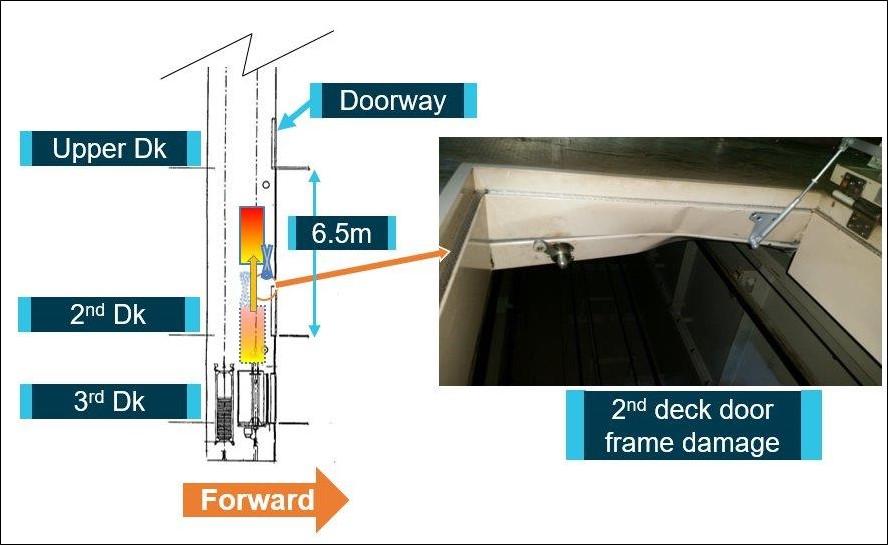A seafarer was testing the ship’s personnel elevator after completing mechanical repairs.2 While on the elevator cage top, the seafarer was fatally injured after being trapped between the moving cage and the bulkhead.
The reasons the seafarer was in this position and became trapped could not be determined. However, seafarers onboard were not informed elevator work was being conducted and warning signs were not in place to indicate the elevator was out of service. This allowed elevator call requests to be made while the work was underway, while the seafarer was on the cage top.
For any task that is performed on multiple occasions without any adverse consequences, there is the potential for an individual’s perception of risk to decrease. Hence it is important to follow documented procedures and safe working practices, even when one considers the task/operation to be safe.
It is important that close and careful supervision is maintained for elevator testing and tasks. Supervisory oversight provides an external check and safety barrier before, and during, the work3.

Footnotes
2 ATSB (2020) Fatality in the elevator trunk on board OOCL Kuala Lumpur. Marine Occurrence Investigation 345-MO-2018-009.
3 International Labour Organization (2016) Guidelines for implementing the occupational safety and health provisions of the Maritime Labour Convention, 2006.